How to Spice Up Your Podcast With Sound
Conjure the sound design of a beloved podcast.
The texture of voices; the crinkling of laughter; the hushed tones of confessions; the playful swerve of music dipping below dialogue.
What comes to mind?
The relaxed and informal delivery of My Favorite Murder, perhaps? The quirky riffs and crystalline delivery that define NPR’s way of life?
There’s no one right answer to this question, of course. In fact, when dreaming up creative ways to play with podcast sound, the limit does not exist.
The accessibility of podcasting has made it home to all kinds of content. Thinking outside the box not only allows you to stretch your producer muscles—you’ll be able to better capture the interest of desired listeners in an already competitive space—but you’ll also get to tell your story in the most engaging and impactful way possible. (The medium is the message!)
So what is “sound design” anyway?
It’s everything. The music, the voices—the way they compete or compliment each other. If music and SFX are the side dishes, and interviews and conversations are the main, then sound design is the way the chef chooses to do the plating.
Before journeying any further into the specifics of sound design, it’s important to be aware of this fundamental truth: everything is a choice when it comes to sound design.
Even if you stick to a minimalist approach and add nothing to your recorded voices, you’re still influencing how your show will sound and how it will ultimately be received by listeners.
Never forget the wise words of Neil Peart: if you choose not to decide, you still have made a choice! In fact, a lack of sound, when used intentionally, can be extremely powerful.
A well-timed pause from music or sound effects can make a voice stand out and command a listener’s undivided attention.
Wait, you say. Lots of sound is sound design, but not a lot of sound is also sound design? Where am I supposed to start with this concept?!
This is the part of the process where you get to expand your brain and consider the philosophy behind the sound of your show. What is the core story? How does that story feel to you? Now, how does that feeling sound? Playing with different approaches to sound design is an incredible way to expand your skills, and it’s also incredibly fun.
This is actually one of the parts of working with sound that I love most—and as a self-identified nerd about this kind of thing, there are many things that I love.
But I think what draws me to conversations about design again and again is this self-reflexive process of listening, feeling, making a change, listening again, feeling... It can be a deeply connective experience. If you haven’t yet thought about your show-building intentionally like this, give it a try! It might change the whole game for you.
How do you get started?
You’ve got a sonic concept, and you’re ready to get to work. Great! But have you explored the landscape of what’s possible?
As with most things to do with podcasting, the best way to explore is by listening to as many different podcasts as possible and learning what kind of sound really speaks to you. Have fun with this—just keep your ears open, and be aware of what kind of reactions that different shows inspire in you.
Does marimba make your soul cringe? Are you tired of ukulele? Do you get chills from well-placed field recordings? Note it!
To help you kick things off, here are a few examples of shows that get noticed specifically for their creative construction. Each one takes a decidedly different approach to design, and each effectively achieves a different storytelling goal.
1. Radiolab (Falling)
It’s difficult not to mention Radiolab in any exploration of creative sound design in podcasts. The WNYC-produced radio show has been around since 2002, and it’s always been known specifically for its unique approach to sound. Producers like Dylan Keefe are musicians as well as sound engineers.
You can hear musicality all throughout Radiolab. The show’s use of field recordings and sound effects interplays with interview tape and music in ways reminiscent of musical compositions, where balance and flow are key. Despite all the sound experiments taking place, the show never fails to read as journalistic due to the intentional philosophy put into the sound creation process. For example, Keefe uses sound as an “editorial statement”—an extension of the written journalism.
In Radiolab, that means there are two different, fun approaches at play:
Their team composes podcast episodes like one might compose music.
Their team views additional sound as journalism instead of ornamentation, and the result is a show that is both journalistically innovative and sonically compelling.
2. BBC Short Cuts, (The Sea, The Sea)
Short Cuts host Josie Long presents “audio adventures” in every episode, and the format of the show feels more like the old-school sound experiments traditionally found on community radio stations (long live weird radio!)
This show is unafraid to be experimental in ways that feel like loving tributes to the golden age of the radio documentary—it feels different from the slicker sound design of other podcasts, but the major benefit of sound design in this style is the sense of rawness and authenticity it transmits.
“Performing authenticity” is the key to creating that sense of genuine human connection and emotionality that the audio medium is known for. Integrating wild sound, b-roll, and field recordings go a long way.
3. Parkdale Haunt, (Start with the trailer and go from there!)
Yes, SFX, music and field recordings are the foundation of sound design.
But every aspect of your show can be used to enhance the sonic experience for your listener, including vocal performance. Parkdale Haunt lands on the more theatrical end of the spectrum—it’s a fictionalized series, and as such, script delivery is key to its success (along with excellent spooky scoring and ghostly sound effects.)
But vocal performance isn’t only important for scripted dramas or comedic podcasts. Even in more journalistic or conversational shows, the way your on-air talent speaks has a huge impact on the overall sound of the show. Thinking critically about delivery style and host tone as holistic parts of show design enable you to truly “compose” your podcast.
Can there be much of a good thing?
No matter the vision for your podcast, taking time to consider sound design will change your production approach and result in a better podcast. Finding that particular creative space is an important (and fun!) part of the process.
But if you let things get too muddled, you risk publishing confusing or overwhelming mixes, and your audience might lose the thread of your story.
Here are a few more examples, this time of shows who may have gone a tad too far in one direction or another. Listen to these and note how you feel as compared to the first three examples—do you feel inexplicably stressed, overwhelmed, or just fully confused?
RADIOLAB (Yep, FALLING AGAIN!)
But wait, you’re saying - how can this same example be both Best in Class and Too Much? I do this confusing thing to you because I want to emphasize the subjective nature of sound design. The production techniques that make Radiolab stand out and have garnered so much praise also alienate certain listener groups from tuning in at all. To them, the show sounds “overproduced.” It’s lost a sense of rawness and authenticity, and that can make it very difficult for listeners to connect to the stories being told on a personal level. This amount of skilled production can serve certain shows very well, but it’s important to avoid making your work sound too slick, especially if you’re trying to sound accessible.
2. Dr. Death (Top Doc)
The story reported on in this series caught listeners’ attention for a number of reasons, but let’s put that aside for now and just listen to the sound profile. The scoring behind the spoken voices in this podcast is nearly constant—over time, this technique can become tiring on the ear (plus it makes the ads jump out in a haunted-house kind of way). Plentiful and creative music can add cinematic drama to your production, but leaving breaks for air between motifs is important, too!
Let’s get cracking
You’re ready to go forth and create!
Right?
If you’re still not quite feeling ready to jump into it, have no fear; it’s time to talk specifics.
How do you graduate from music—interview—music to something more complex?
The good news is, it’s not as challenging or intimidating as you’d think.
You can jump quickly into adding new sounds into your mixes with the help of SFX and music bed catalogues. Here, you’ll find a wide range of sounds and music that you can listen through to see what inspires you. Most of these sites operate on a subscription model, and you’ll need to license music that you’d like to use in your show. That price does come with some major potential benefits—you’ll have access to a huge range of sounds (including some you may not have been able to recreate yourself), and you’ll be able to make use of music that is already polished and ready to be heard (a lengthy process in and of itself).
Here are some of our favourite music libraries and SFX catalogues:
SFX: Soundly, SoundFX, and Freesound (IT’S FREE!)
MUSIC: MusicBed, APM, UNIVERAL
If you can’t afford or don’t want to use SFX catalogues or existing music beds, you can create your own. And you can be as DIY about this as you like. Follow the traditions of the Foley artist! Experiment with objects around your house and record sounds that intrigue you. Try picking up an instrument, or playing with a MIDI instrument or synth plug-in if you want to try electronic tunes.
Here are a few inexpensive and fun options courtesy of Reverb Machine. Also, check out their song-by-song instructional on replicating the synth sounds from Tame Impala’s Currents album to get some free training and live your psychedelic synth dreams.
Finally, don’t underestimate the amount of fascinating and powerful sound available to you out in the world—take a soundwalk with your recorder! Stand by a body of water and record the sounds of the shore! Record humming machinery, footsteps on concrete or trail, echoes and swishing fabrics... and then go back home and see what you have uncovered.
Found sound can be beautifully emotive and authentic, because it is the real deal. It takes a careful ear and some patience, but you might find that there is amazing sound easily accessible to you in this way - and it’s free!
Have fun and share your sound creations with us!
We’re @vocalfrystudios on Instagram & Twitter.





